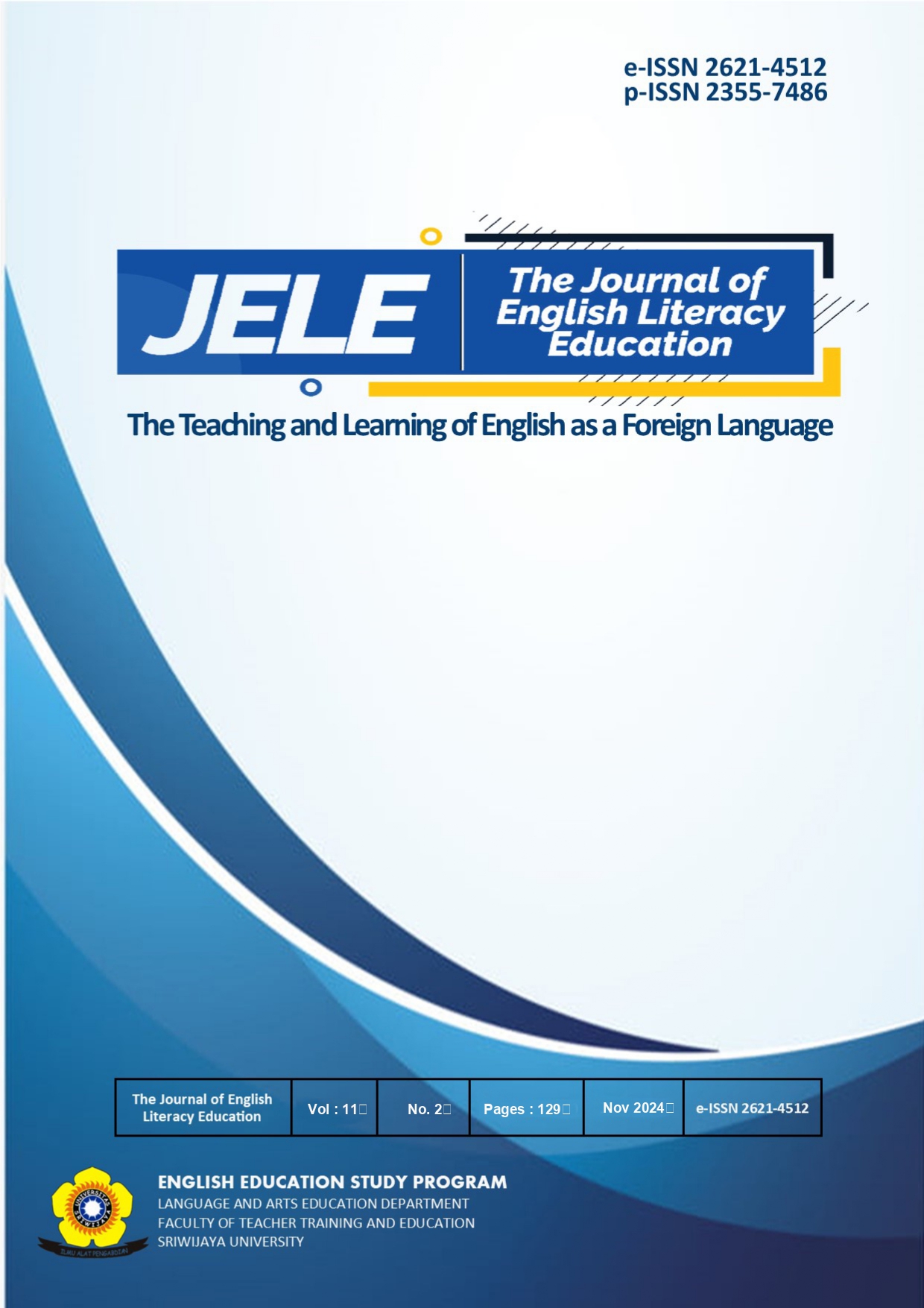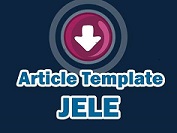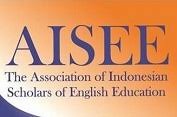VALIDITY, PRACTICALITY AND EFFECTIVENESS OF A WEB-BASED INSTRUCTIONAL MATERIAL BASED ON LEARNING STYLES
DOI:
https://doi.org/10.36706/jele.v11i2.51Keywords:
developmental research, learning style, web-based instructional materialAbstract
The shifting of teaching and learning mode results in the urgency of the development of instructional materials. Ironically, the availability of web-based instructional reading material on the basis of learning style is still limited. This developmental study examined data qualitatively and quantitatively from 16 questionnaire respondents, six interviewees and two lecturers to investigate the needs of developing instructional materials, the extent to how lecturers shaped their beliefs, students’ reading level, and students’ learning styles. This study also aimed at finding out the validity, practicality, and the effectiveness of developed product. Three students involved in one-to-one evaluation, nine students in small group evaluation and 17 students in the field test. This research implemented a four-stage model by Akker. Formerly, the result of analysis phase represented some analysis points. Furthermore, the product was highly valid on its content, construct and technology use with average score 4.4. The average scores of practicalities were 4.1 in one-to-one evaluation and 4.2 in small group evaluation. High validity with the score 4.3 was the result of the field test. Potential effect was also high in the average score of reading test, 86.47. This study, expectedly, gives favourable impact to the teachers and students in the future.
References
Akbari, O., & Razavi, A. (2016). Using authentic materials in the foreign language classrooms: Teachers’ perspectives in EFL classes. International Journal of Research Studies in Education, 5(2), 105-116.
Akker, J. (1999). Principle and methods of development research. In J. Akker, R. Branch, K. Gustalfon, T. Nieveen N, &Plomp (Eds.), Design methodology and development research (pp. 1-14). London: Kluwer.
Anggeraini, Y. (2020). Language teaching in the digital age: Teachers’ views and its challenges. Research and Innovation in Language Learning, 3(3), 163-172.
Anggraini, H. W., Novianti, H., & Bardadi, A. (2018). Pengembangan bahan ajar berbasis android untuk meningkatkan kemampuan pengucapan pada mahasiswa. CESS (Journal of Computer Engineering System and Science), 3(1), 83-86.
El-Sabagh, H. A. (2021). Adaptive e-learning environment based on learning styles and its impact on development students' engagement. International Journal of Educational Technology in Higher Education, 18(1), 1-24.
Elviana, R., Inderawati, R., &Mirizon, S. (2020). Developing interactive multimediafor teaching descriptive texts based on Palembang local culture. Indonesian EFL
Fatmianeri, Y., Hidayanto, E., & Susanto, H. (2021). Pengembangan Modul Elektronik Berbasis Differentiated Instruction untuk Pembelajaran Blended Learning. JIPM (Jurnal Ilmiah Pendidikan Matematika), 10(1), 50-62.
Fotos, S., & Nassaji, H. (2007). Form-focused instruction and teacher education: Studies in honour of Rod Ellis. (No Title).
Ghufron, M. N. & Risnawita, R. (2014). Gaya belajar. Yogyakarta: Ar-ruz Media.
Harmer, J. (1991). The Practice of English Language Teaching. London: Longman.
Hayati Hussein, A. A., & Al-Chalabi, H. K. M. (2020). Pedagogical agents in an adaptive E-learning system. SAR J. Sci. Res, 3, 24-30. Journal, 6(1), 19-26. https://doi.org/10.25134/ieflj.v6i1.2634
Nafiah, U. (2020). Developing English modules with integrated Islamic values and Jambi local wisdom. Studies in English Language and Education, 7(1), 96-112.https://doi.org/10.24815/siele.v7i1.15138
Nkomo, L. M., Daniel, B. K., & Butson, R. J. (2021). Synthesis of student engagement with digital technologies: a systematic review of the literature. International Journal of Educational Technology in Higher Education, 18, 1-26.
O’Brien, L. (1985). Specific Diagnostic Studies, Inc., Rockville, MD.
Puspitasari, E. D. T., Surjono, H. D., & Minghat, A. D. (2018). Utilizing web based learning as 21st century learning media for vocational education. International Journal of Engineering & Technology, 7(4.33), 157-160.
Rusman, R. (2009). Layanan pembelajaran berbasis e-learning. Majalah Ilmiah Pembelajaran, 2(6), 144.
Salam, S. (2017). Developing needs analysis based-reading comprehension learning materials: A study on the Indonesian language study program students. Advances in Language and Literary Studies, 8(4), 105-113.
Solihin, A. (2020). Pembelajaran Online denganAplikasi Zoom Meeting di Kelas 5 SDN 1 Selaawi di Masa Pandemi Covid-19. Gunahumas (Jurnal Kehumasan), 3(2), 17-24
Surdyanto, A., & Kurniawan, W. (2020). Developing critical reading module using integrated learning content and language approach.
Studies in English Languageand Education, 7(1), 154-169. https://doi.org/10.24815/siele.v7i1.15098
Tessmer, M. (1993). Planning and conducting formative evaluation. Philadehelphia, PA: Kogan Page.
Universitas Sriwijaya. (2021). Buku pedoman Universitas Sriwijaya 2021/2022. Inderalaya: Universitas Sriwijaya.
Warni, S., Aziz, T. A., & Febriawan, D. (2018). The use of technology in English as a foreign language learning outside the classroom: An insight into learner autonomy. LLT Journal: A Journal on Language and Language Teaching, 21(2), 148-156.
Downloads
Published
Issue
Section
License
Copyright (c) 2025 The Journal of English Literacy Education: The Teaching and Learning of English as A Foreign Language

This work is licensed under a Creative Commons Attribution-ShareAlike 4.0 International License.













